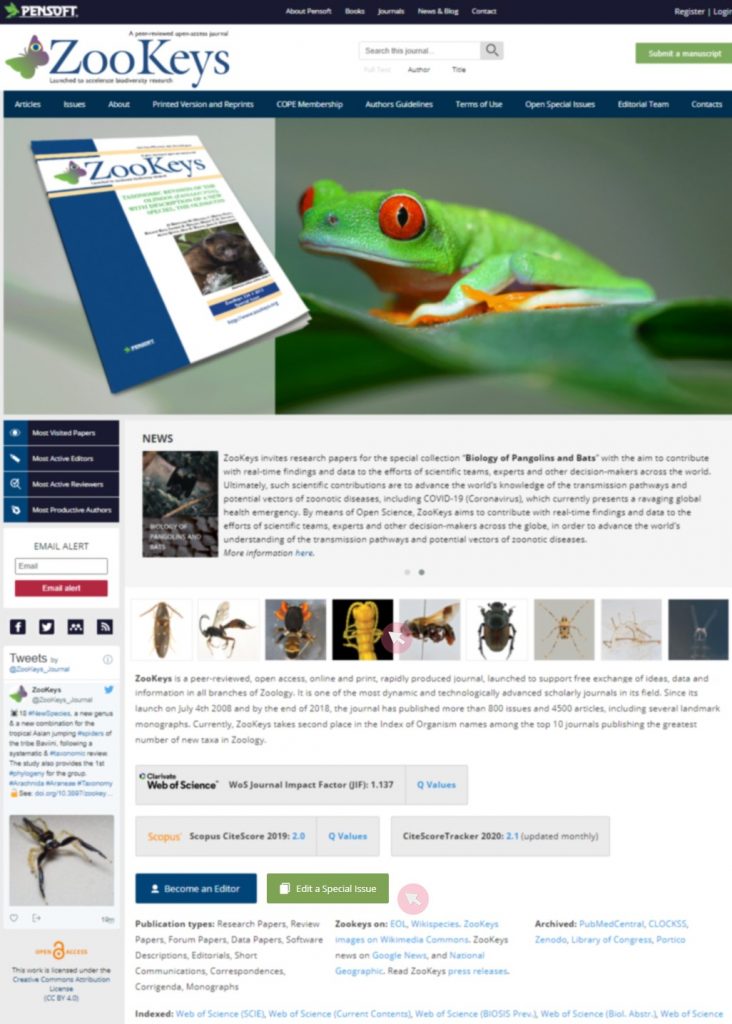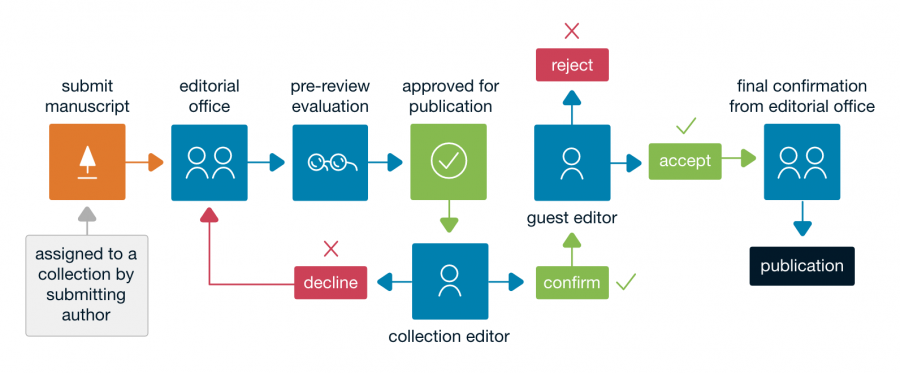Recently, we held a series of meetings with the editorial boards of our client journals, where we focused on journal development and how we, as a publisher and services provider, can further chip in in the ultimate editorial task: quality content acquisition. One thing that we reaffirmed was a longstanding notion: academics are deeply fond of special issues and topical collections (collectively referred to as “article collections”).
So, there’s a good reason why this remains to be the case, even in the high-tech era of today where everything changes and evolves day by day. Come to think about it, it’s several of them:
- Good for the editors: guest editors receive highly valued credit and recognition for bringing together extensive quantities of thematic content, where the topic is usually a pressing and highly appreciated amongst fellow academics. Showcasing that you have pitched and taken the responsibility of managing an article collection is a wonderful way to sprinkle some sparkle in your academic resume!
- Good for the readers: collated content makes it easier to discover and, in turn, use relevant studies, thereby saving precious time for the next research team looking to develop the topic.
- Good for the authors: it’s the bitter truth that many research papers fall short on academic and/or public attention for no reason other than the fact they haven’t gone viral on Twitter, nor have their titles been made artificially appealing. Getting your paper next to a highly attractive publication, however, can give your study that delicate boost of first-sight appeal!
- Good for the journal: having multiple papers conveniently grouped together by topic and relevance prompts their simultaneous use and citation, naturally increasing the overall impact of the journal hosting the article collection. As a bonus, the issue as an entity is likely to receive references, further aiding the journal’s outstanding reputation.
Having acknowledged all of this, we found ourselves contemplating how we could possibly help our client journals and their users pitch and manage article collections.
Firstly, we refined the concepts for both special issues and topical collections. Then, we developed a dedicated editorial management system to allow for a smooth and efficient workflow all the way from the moment the collection’s proposal is submitted to its successful conclusion.
Special issue vs. Topical collection
While both types of article collections overlap considerably, we shall start by explaining what are the key differences between a special issue and a topical collection:
| Special issue | Topical collection |
| Available* only at journals published in consequent numbered issues | Available* at all journals |
| Deadline for manuscript submission and publication of the issue | No deadline for manuscript submission (until the collection is announced to be closing soon) |
| Possible limits in the volume and/or number of articles in the special issue | No limits for volume or number of articles |
| Pre-scheduled (approximate) date of publication announced with the initial call for papers | Collection editors need to provide a timely notice when/if the collection is planned to close for submission |
| Papers wait for publication until completion of the special issue and the set publication date | Papers are published on a rolling basis as soon as ready |
| All papers published in a separately numbered issue within the yearly journal’s volume | Papers in the collection normally published in different journal issues, depending on time of publication |
| Normally published within a year from the initial call for papers | Can be published across many years, depending on the Collection editor’s commitment and journal’s decision |
*Availability is subject to request by the journal.
How it works
- Each submission meant for the collection will be first delivered to the editorial office and/or Editor-in-Chief (depending on the journal’s policy), in order to ensure that the manuscript is compatible with the journal’s scope, focus and standards.
- If approved, the manuscript is forwarded to the Collection editor who assigns it to either himself/herself or another Guest editor to take care after the peer review process and make the editorial decision on its acceptance or rejection.
- Once the Collection editor submits the decision, the submission’s processing will be finalised at the journal’s editorial office.
As a result, ARPHA’s automated journal management system, in combination with our experienced editorial team, provides an efficient and convenient service that balances out user interface intuitivity, time-efficiency and quality.
The editor’s point of view
To provide an efficient organisation and balance in the workload, we’ve designated two roles for the guest editors of an article collection: a Collection editor and a Guest editor(s). While both are able to handle manuscripts as handling (subject) editors (i.e. manage the peer review process and make a final decision on the manuscript’s acceptance or rejection), the Collection editor is the one who pitches the collection, appoints the Guest editors and works with the journal’s editorial office on matters regarding the collection, including its appearance on the journal’s website. It’s also the responsibility of the Collection editor to ensure that the collection meets any applicable requirements.

Thanks to the refined ARPHA workflow, all the Collection editor needs to do is fill in an application form on the journal’s website, then wait to be contacted by the journal’s editorial office and/or Editor-in-Chief. If the collection is approved, the editorial office will set up the collection and grant the Collection editor with the necessary rights and provide instructions for ARPHA’s comprehensive journal management system, where he/she will be able to track and perform the actions needed to handle the manuscript. Similarly to the regular editorial workflow at ARPHA-hosted journals, the platform will be automatically notifying the editors each time they need to take an action.
The author’s point of view
The only thing authors, who wish to submit their paper to an article collection within an ARPHA-hosted journal, will have to do differently in comparison to the regular submission process, is to select the name of the collection in a dropdown menu during the submission process.
On the occasion that the manuscript complies with the scope and standards of the journal, meaning it successfully passes the pre-review evaluation, however, is declined from the collection by the Collection editor prior to peer review, the submission will be processed through the journal’s standard editorial process, and if accepted for publication, the article will appear as a regular article in the journal.
Find more information about the article collections workflow and requirements in the About space at the website of the journal you’re interested in (see example from ZooKeys).
***
We’re open to feedback and further information requests. You can contact us on email: info@arphahub.com
Follow @ARPHAPlatform on Twitter and make sure to subscribe to our blog to keep yourself updated about new features coming to ARPHA-published journals.

